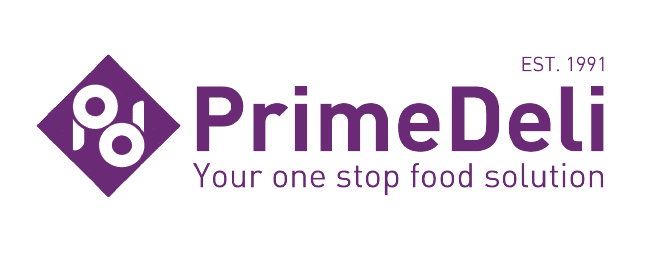5 Types of Packaging Your Food Supplier Should Use
Food packaging plays a vital role in preserving the fresh and frozen ingredients you use in your food and beverage (F&B) business.
If your food supplier compromises on the quality of the packaging they use, the quality of the perishable products you receive will also be compromised, affecting the standard of food you end up serving your customers.
That said, quality packaging doesn’t come cheap.
In fact, packaging costs typically account for 8-10% of overall product costs. Additionally, shipping and distribution costs may rise depending on the packaging materials your food supplier uses.
Even so, food safety is key for an F&B business to succeed in the long term. In recent years, the development of novel food packaging has not only increased the shelf life of foods, but also their safety and quality, making it more convenient for you to obtain perishables at the peak of their shelf life.
Here are the 5 best types of packaging to make sure your food supplier uses when delivering your order of fresh and frozen ingredients.
-
Food-Grade Plastics
Frozen food, dry grocery items and perishables each require a different type of packaging to maintain freshness, however, the use of food-grade plastics are an excellent choice for most food products.
Food-grade plastics are made with antimicrobial technology approved by the Environmental Protection Agency (EPA) and regulated by the Food and Drug Administration (FDA) to be integrated into plastic packaging for food products because it helps prevent the growth of mold, bacteria, mildew, odors, and discoloration.
Plastic is typically an excellent choice for food packaging because it’s durable and can withstand rough handling amid transportation. It’s also lightweight, moisture-resistant, and recyclable. If sustainability is something your F&B business values highly, check if your food supplier uses recycled plastics materials in their packaging.
However, ensure that the sustainable packaging is still food-grade plastic because other plastics could cause chemicals to seep into the food product, making it unsafe for the consumer.
-
Vacuum Packaging
Vacuum-packed packaging is a popular and efficient method used by food suppliers to preserve the freshness and quality of various products. This packaging technique involves removing the air from the package before sealing it, creating a vacuum-sealed environment. The absence of air significantly slows down the oxidation process, reducing the risk of spoilage and extending the shelf life of perishable items such as meats, fish, and vegetables.
This type of packaging also helps prevent freezer burn by minimizing exposure to moisture, making it an ideal choice for frozen foods. Beyond preservation, the tight seal enhances food safety by reducing the chances of contamination.
Additionally, the compact and airtight nature of vacuum-packed packaging minimizes the need for preservatives, promoting a more naturally fresh product. This ensures product longevity while also minimising food waste by maintaining the nutritional value of the raw ingredients for an extended period.
-
Resealable Pouches
Resealable pouches are a more expensive but convenient and sustainable packaging solution in the food industry. These pouches feature a user-friendly resealable mechanism that allows consumers to open and close the package easily, preserving the freshness of the contents.
Ideal for a wide range of products, from powdered food items like seasonings, beans and cereals to sliced poultry and cheese, resealable pouches enhance convenience while reducing the need for additional storage containers. The resealable feature not only helps in maintaining the product’s quality over time but also minimises food waste by allowing consumers to consume the contents gradually.
From a sustainability perspective, these pouches often use lightweight and flexible materials, reducing overall packaging waste. The versatility and eco-friendly attributes of resealable pouches make them a popular choice for both consumers seeking convenience and food suppliers aiming to align with environmentally conscious packaging practices.
-
Metal or Tin Containers
When you’re packaging perishable foods, one of the best types of packaging you could use is metal or tin containers. Metal is a staple in the food packaging industry, valued for its durability, protective qualities and ability to preserve the freshness of a variety of products.
Metal or tin containers are thus able to provide a robust barrier against light, moisture and air, shielding food contents from external factors that can compromise quality. The inherent strength of metal ensures the protection of the product during transportation and storage while also being highly recyclable which helps to reduce the environmental impact associated with packaging.
The recycling process for metal is energy-efficient and results in minimal degradation of material quality, making it an environmentally responsible choice. Moreover, metal containers are well-suited for a wide array of food types, from acidic fruits to savory soups, as they do not react with the contents, ensuring the taste and nutritional integrity of the products.
-
Insulated Foam Containers
Insulated foam containers play a pivotal role in preserving the temperature and quality of food during transportation and storage. Composed of expanded polystyrene (EPS), these containers are renowned for their excellent insulating properties. The lightweight and sturdy nature of insulated foam make them an ideal choice for transporting hot or cold foods, ensuring that meals maintain their desired temperature until they reach the consumer.
The insulating foam not only protects against temperature fluctuations but also adds a layer of cushioning, safeguarding delicate or fragile items during transit. However, it’s important to note that most insulated foam containers are non-biodegradable, especially with growing consumer concerns regarding sustainability. Nevertheless, of all packaging types for the time being, insulated foam containers remain the best at maintaining the original temperature of food products.
Here at Prime Deli, we take pride in using the most effective packaging methods required to maintain food safety standards and quality in order to provide our consumers with the freshest products possible. Order everything your F&B business needs from us today!

